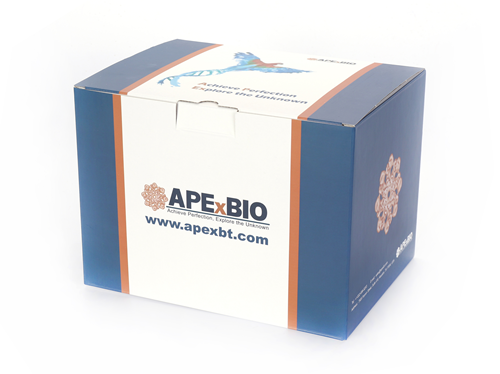Recombinant Human Prolactin
Prolactin (gene name PRL) is a secreted neuroendocrine pituitary hormone that acts primarily on the mammary gland to promote lactation, but has pleiotropic effects in both males and females [1-6]. Prolactin is predominantly found as 199 amino acid, 25 kDa glycosylated and 23 kDa non-glycosylated monomers [6]. Human prolactin shares only 60% and 63% amino acid sequence identity with mouse and rat prolactin, respectively, although rat prolactin can activate the human prolactin receptor [3]. Post-translational modifications such as polymerization, complex formation with IgG (in humans), glycosy-lation, and proteolytic cleavage can alter the activities of prolactin [6-8]. Non-glycosylated prolactin is produced by the pituitary and packaged in storage granules before secretion, while glycosylated prolactin is reported to be constitutively secreted, have lower biological potency, and be removed from the circulation more quickly [3, 6, 7]. Cleavage by matrix metalloproteinases or Cathepsin D can produce N-terminal 16 kDa antiangiogenic fragments also called vasoinhibins [9, 10]. Thrombin can produce C-terminal 16 kDa fragments that are not antiangiogenic [3]. Prolactin is synthesized mainly by the anterior pituitary in all mammals, where secretion is under tonic inhibition by hypothalamic dopamine [2, 3]. In humans, prolactin is also produced peripherally [2-5]. Prolactin expression is low during early human pregnancy, but increases in late pregnancy [2, 3]. The prolactin receptor (gene name PRLR) is a transmembrane type I glycoprotein that belongs to the cytokine hematopoietic receptor family. Expression of the prolactin receptor is widespread [2-5].
Reference
[1]. Cooke, N.E. et al. (1981) J. Biol. Chem. 256:4007.
[2]. Grattan, D.R. and I.C. Kokay (2008) J. Neuroendocrinol. 20:752.
[3]. Ben-Jonathan, N. et al. (2008) Endocr. Rev. 29:1.
[4]. Bernichtein, S. et al. (2010) J. Endocrinol. 206:1.
[5]. Goffin, V. et al. (2011) Nat. Rev. Urology 8:597.
[6]. Price, A.E. et al. (1995) Endoc. 136:4827.
[7]. Hoffmann, T. et al. (1993) J. Endoc. Invest. 16:807.
[8]. Cole, E. et al. (1991) Endoc. 129:2639.
[9]. Piwnica, D. et al. (2006) Mol. Endocrinol. 20:3263.
[10]. Macotela, Y. et al. (2006) J. Cell Sci. 119:1790.
|
Accession # |
P01236 |
|
Alternate Names |
PRL; Prolactin |
|
Source |
Human embryonic kidney cell, HEK293-derived human Prolactin protein |
|
Protein sequence |
Leu29-Cys227 |
|
M.Wt |
22.9 kDa |
|
Appearance |
Solution protein. |
|
Stability & Storage |
Avoid repeated freeze-thaw cycles. It is recommended that the protein be aliquoted for optimal storage. 3 years from date of receipt, -20 to -70 °C as supplied. |
|
Concentration |
0. 2 mg/mL |
|
Formulation |
Dissolved in sterile PBS buffer. |
|
Reconstitution |
We recommend that this vial be briefly centrifuged prior to opening to bring the contents to the bottom. This solution can be diluted into other aqueous buffers. |
|
Biological Activity |
Measured in a cell proliferation assay using Nb2-11 rat lymphoma cells. The EC50 for this effect is 5-14.8 pg/mL |
|
Shipping Condition |
Shipping with dry ice. |
|
Handling |
Centrifuge the vial prior to opening. |
|
Usage |
For Research Use Only! Not to be used in humans. |
Quality Control & DataSheet
- View current batch:
-
Purity > 95%, determined by SDS-PAGE.
- Datasheet
Endotoxin: <0.010 EU per 1 ug of the protein by the LAL method.








